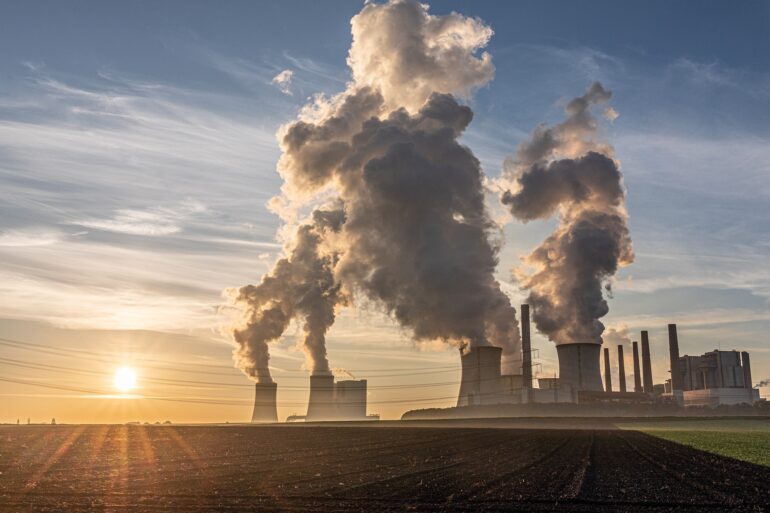TL;DR:
- Carbon dioxide is the primary contributor to global warming.
- Without action, the average global temperature will rise by 1.5 degrees Celsius by 2100.
- Amir Barati Farimani is using machine learning to find solutions for carbon dioxide capture and storage.
- Machine learning models can discover new compounds to combat global warming.
- Barati Farimani’s breakthrough involves using machine learning to identify ionic liquid molecules.
- Ionic liquids are ideal candidates for carbon dioxide storage due to their stability and solubility.
- Barati Farimani developed fingerprint-based machine learning models and neural graph networks.
- These models accurately predict carbon dioxide absorption in ionic liquids.
- Understanding the molecular structure helps identify key properties of ionic liquids.
- Certain molecular fragments and chemical interactions are more favorable for carbon dioxide storage.
- Barati Farimani’s work contributes to innovative approaches in the fight against climate change.
Main AI News:
Carbon dioxide, among all greenhouse gases, has emerged as the foremost contributor to the escalating global warming crisis. The Intergovernmental Panel on Climate Change warns that unless swift action is taken, the average temperature of the world will soar by approximately 1.5 degrees Celsius by the year 2100. Researchers and industries dedicated to combating global warming have faced a daunting challenge in their quest to find effective methods for capturing and storing carbon dioxide. However, Amir Barati Farimani has embarked on a mission to revolutionize this landscape.
Amir Barati Farimani, an esteemed assistant professor of mechanical engineering at Carnegie Mellon University, elucidates how machine-learning models hold the potential to uncover groundbreaking chemical compounds and materials that can combat global warming. By leveraging these models, accurate and efficient virtual screening of carbon dioxide storage candidates becomes achievable, potentially yielding novel and desirable compounds that have never before existed.
In a remarkable feat, Barati Farimani has achieved a breakthrough through the implementation of machine learning in the identification of ionic liquid molecules. Ionic liquids, or ILs, represent a class of molten salts that retain their liquid state even at room temperature. They possess remarkable characteristics such as high chemical stability and remarkable carbon dioxide solubility, making them highly promising contenders for carbon dioxide storage.
The properties of ILs are predominantly determined by the combination of ions present within them. However, the vast number of possible combinations of cations and anions poses an immense challenge when attempting to explore the design space of ILs for efficient carbon dioxide storage using conventional experimentation.
While machine learning has found widespread application in the realm of drug discovery, enabling the creation of molecular fingerprints and facilitating neural graph networks (GNNs) that analyze molecules as graphs, Barati Farimani’s work represents a groundbreaking achievement. For the first time, he has developed fingerprint-based machine learning models and GNNs that accurately predict the absorption of carbon dioxide in ionic liquids.
Barati Farimani emphasizes, “Our GNN method achieves unparalleled accuracy in predicting the solubility of carbon dioxide in ion liquids. Unlike previous machine learning methods that heavily rely on manually designed features, our GNN directly learns the features from molecular graphs, enabling a more comprehensive understanding of the intricate molecular structure.”
Crucially, comprehending the decision-making process of machine learning models is equally as significant as identifying molecular properties. This understanding grants researchers invaluable insights into how the molecular structure influences the properties of ionic liquids from a data-driven perspective.
Barati Farimani’s team has made fascinating discoveries, revealing that molecular fragments that engage in physical interactions with carbon dioxide are less critical than those involved in chemical interactions. Furthermore, fragments with fewer hydrogen connections to nitrogen may prove more favorable in establishing stable chemical interactions with carbon dioxide.
Barati Farimani’s groundbreaking work at the intersection of machine learning and chemistry ushers in a new era of possibilities for combating global warming. By harnessing the power of technology and leveraging deep insights into molecular properties, his research paves the way for innovative approaches to carbon dioxide storage and represents a significant step forward in the fight against climate change.
Conlcusion:
The pioneering work of Amir Barati Farimani and his utilization of machine learning techniques to enhance carbon dioxide capture and storage present significant implications for the market. By leveraging these advanced technologies, the discovery of new compounds and materials with the potential to combat global warming becomes a tangible reality.
This breakthrough opens up new avenues for industries focused on environmental sustainability, as they can now explore innovative approaches to carbon dioxide storage using ionic liquids. The accurate prediction of carbon dioxide absorption in these liquids empowers businesses to make informed decisions and invest in more effective and efficient solutions.
Moreover, a deeper understanding of molecular structures and their impact on properties provides valuable insights for further research and development in the market. As the fight against climate change intensifies, Barati Farimani’s work brings about transformative opportunities for companies to contribute to a greener future while also meeting the growing demand for sustainable practices in the market.

